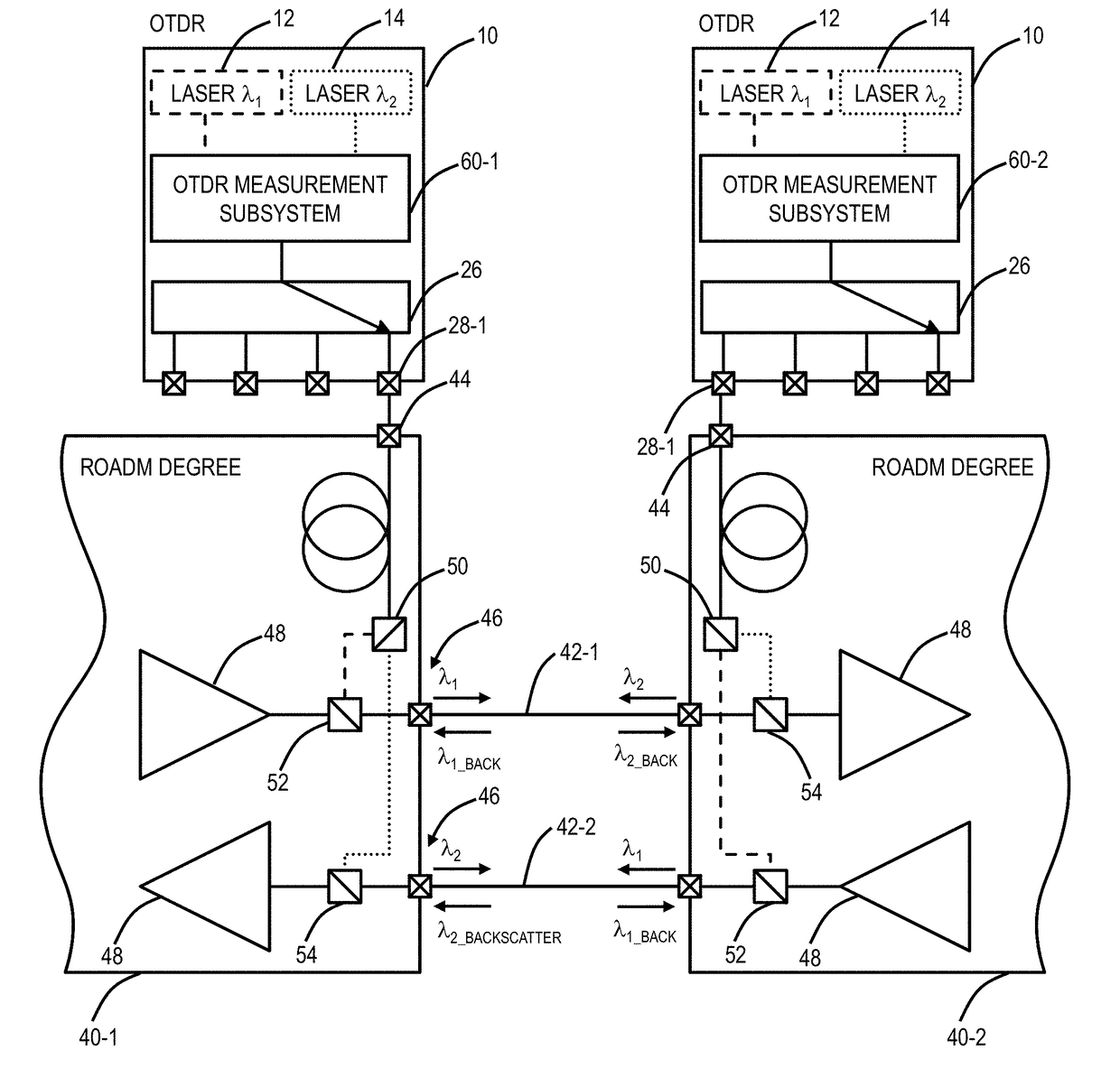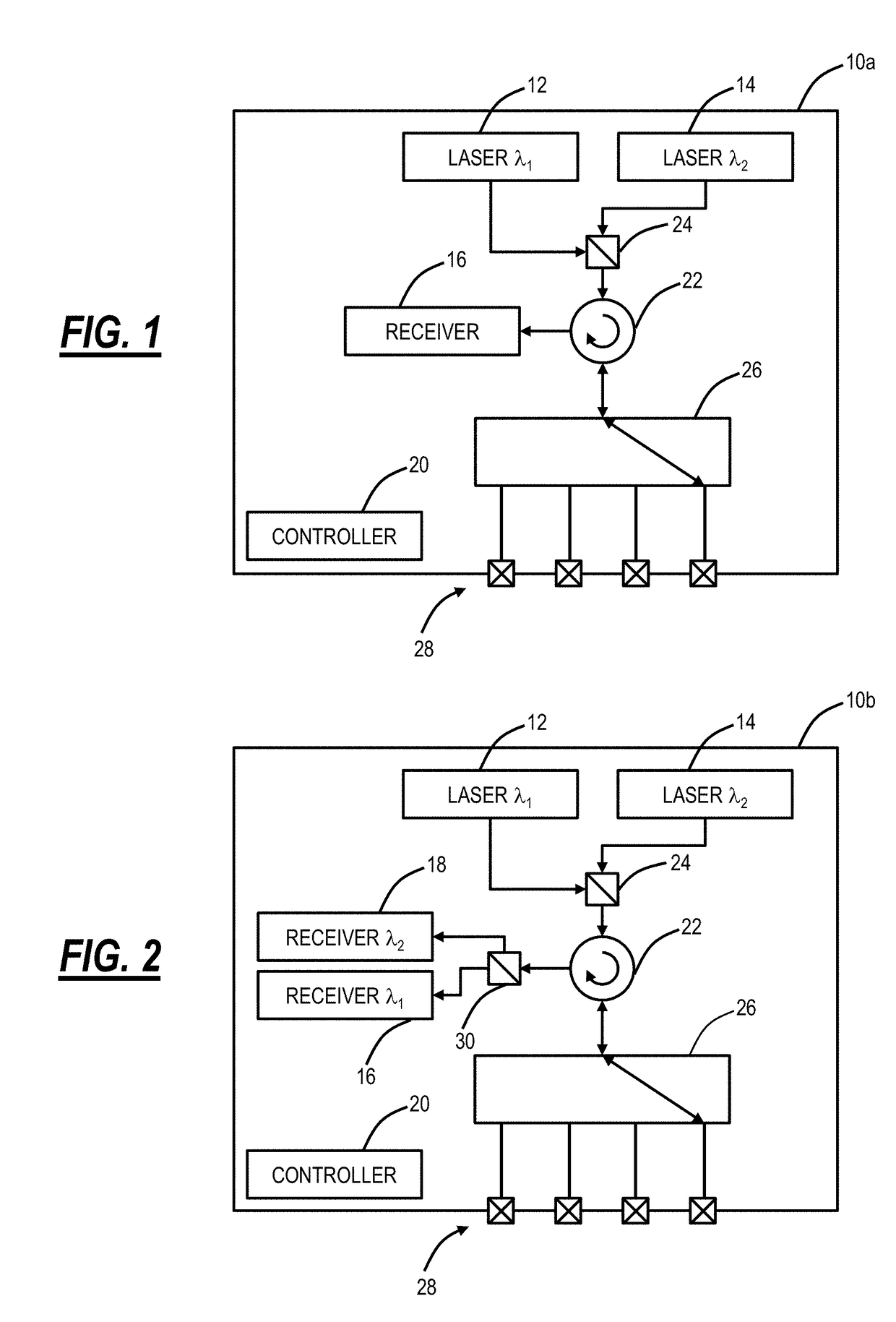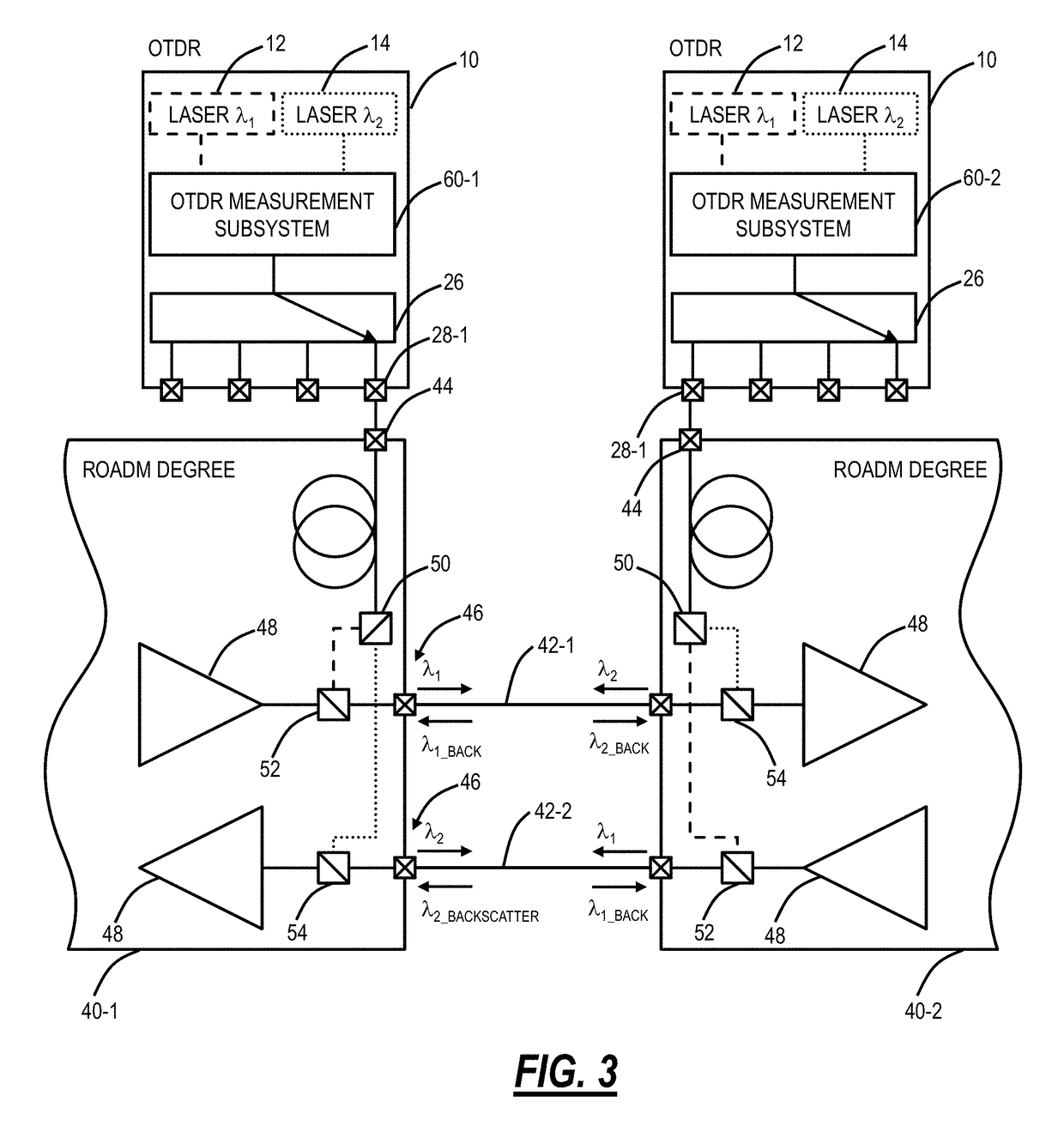Dual wavelenth optical time domain reflectometer systems and methods embedded in a WDM system
a technology of optical time domain reflectometer and wavelength division multiplexing, which is applied in the field of fiber optic systems and methods, can solve the problems of inability to detect events, inability of uni-directional otdr to distinguish between lossy splices, and inability to integrate with wdm systems or operate in-service with such wdm systems
- Summary
- Abstract
- Description
- Claims
- Application Information
AI Technical Summary
Benefits of technology
Problems solved by technology
Method used
Image
Examples
Embodiment Construction
[0017]Again, in various exemplary embodiments, the present disclosure relates to a dual wavelength Optical Time Domain Reflectometer (OTDR) systems and methods embedded in a Wavelength Division Multiplexing (WDM) system. Note, while reference is made to WDM systems, the systems and methods can operate with any type of fiber optic communication systems, such as Dense WDM or the like as well. Variously, the systems and methods include an OTDR measurement system which can be integrated into a WDM system, such as an optical amplifier, optical transceiver, or any other module. The OTDR measurement system is integrated into components of the WDM system at both ends of a fiber span, operating on a fiber under test and providing real-time bi-directional OTDR capability. Thus, the OTDR measurement system can provide simultaneously and independent OTDR monitoring embedded in the WDM system. The OTDR measurement system includes a dual-wavelength design, capable of in-service operation with a p...
PUM
 Login to View More
Login to View More Abstract
Description
Claims
Application Information
 Login to View More
Login to View More - R&D
- Intellectual Property
- Life Sciences
- Materials
- Tech Scout
- Unparalleled Data Quality
- Higher Quality Content
- 60% Fewer Hallucinations
Browse by: Latest US Patents, China's latest patents, Technical Efficacy Thesaurus, Application Domain, Technology Topic, Popular Technical Reports.
© 2025 PatSnap. All rights reserved.Legal|Privacy policy|Modern Slavery Act Transparency Statement|Sitemap|About US| Contact US: help@patsnap.com



